Bonsai trees come in all sorts of species and designs. With small pots, shallow roots, and specific soil needs, Bonsai trees require a specific amount of care—and there is a slight learning curve. Did you recently find that one of your Bonsai has a squishy trunk? You can probably recognize that this isn't normal, but what does it mean, and how do you fix it? We gathered our research to explain why your Bonsai tree has a squishy trunk and what you can do about it.
A Bonsai with a tree trunk that is squishy to the touch means the tissue under the bark has died. This typically happens from chronic overwatering, leading your tree to suffer from a condition called root rot.
If you notice a soft trunk and are worried about root rot, it is time to act. Keep reading as we discuss how you can fix root rot on a Bonsai tree and answer if you can bring a dead Bonsai back to life.
![Why Is My Bonsai Tree Trunk Squishy? [And What To Do About It], A bonzai tree with green leafs and light purple background](https://gardentabs.com/wp-content/uploads/2021/10/Why-Is-My-Bonsai-Tree-Trunk-Squishy-And-What-To-Do-About-It.png)
How Do I Know If My Bonsai Has Root Rot?
Root rot is a condition that can happen to both indoor and outdoor plants when the root system rots and decays. Causes of root rot include overwatering, poor soil drainage, or a root system that is functioning poorly due to underlying issues. Other conditions that increase the risk of root rot are an insufficient amount of light and fertilizer.
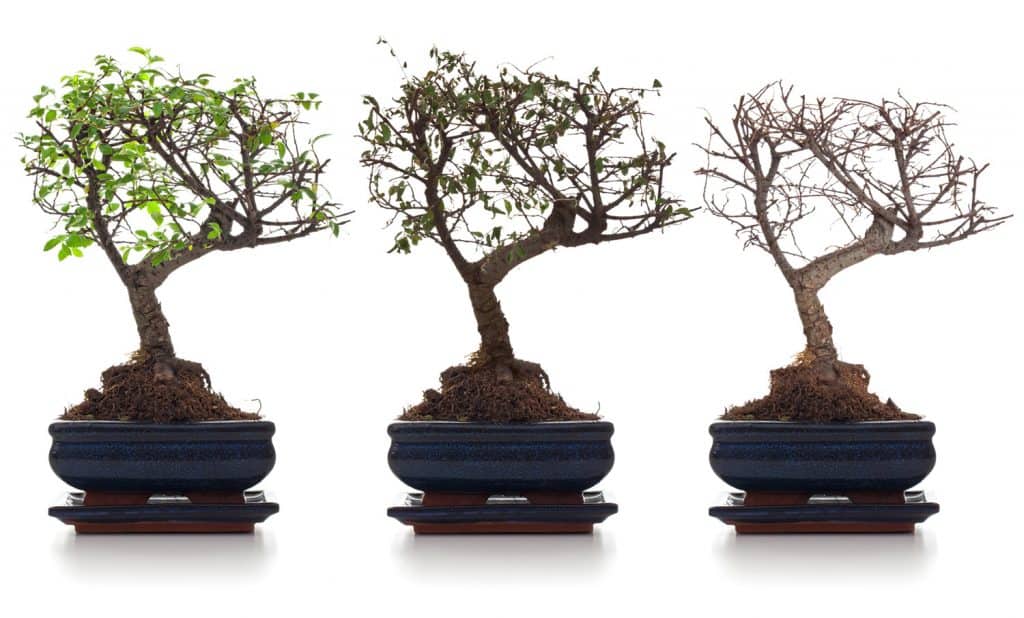
Identifying root rot in your Bonsai can be done by looking directly at the roots. Bonsai roots are shallow, making them more accessible compared to other plants or trees. Brown roots that are soft and falling apart point to root rot, as healthy roots appear white and feel firm.
Other symptoms of root rot that you may recognize in your Bonsai include yellow or wilting leaves, brown or black leaf tips, a squishy or soft tree trunk, and leaf drop.
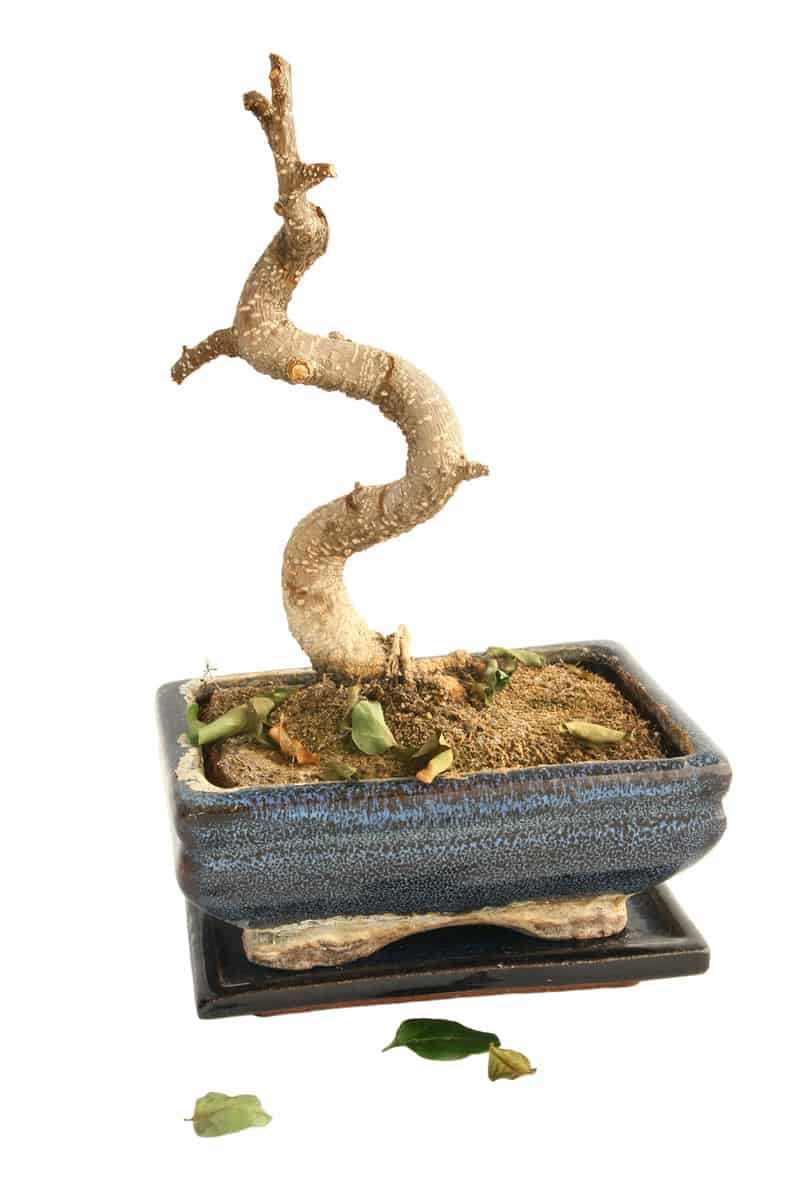
When you start to see these symptoms, it is an indication that your Bonsai has been suffering for some time. It is vital to take action immediately to get your tree back to a healthy state. Let's take a closer look at the steps you can take to fix root rot in your Bonsai tree.
How Do You Fix Root Rot On A Bonsai Tree?
Once you have identified root rot, what should you do? First, you need to determine if your tree can be saved. If the entire root system is in a mushy state, the tree cannot be saved. However, if there are even just a couple of white firm roots, there's a chance you can bring your tree back to health.
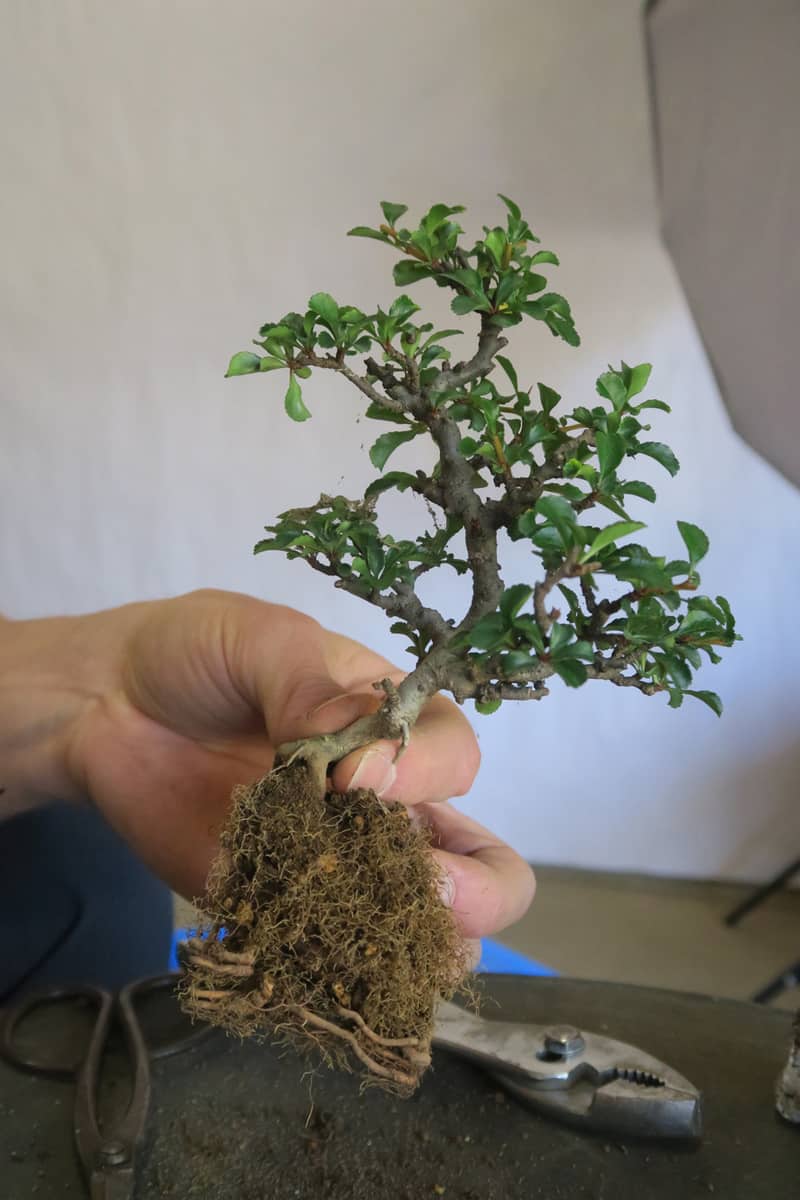
You will need to prepare and re-pot your Bonsai to fix root rot. To prepare your tree, gently remove it from the current pot and rinse the roots, removing any dead parts.
Use a sharp pair of scissors to cut roots just above the damaged area, leaving any healthy sections of roots behind. To avoid spreading the fungus to your other plants, be sure to sterilize your scissors, pots, and any other tools used in the re-potting process.
When re-potting, you want to ensure your Bonsai is getting moved into a new or sterilized pot with Bonsai specific soil. Both the pot and soil should have notable drainage as too much moisture is typically the start of this rotting condition.
Amazon offers an all-purpose Bonsai soil here for optimal drainage and growth.
Read more on our blog post, “5 Best Types Of Soil For Bonsai Trees.”
How Often Should A Bonsai Be Watered?
Bonsai come in many tree species; the specific watering requirements can change depending on which species of tree you have. On average, a Bonsai should get watered once every four to seven days. There are signs to look for that can indicate it is time for your Bonsai to get watered.
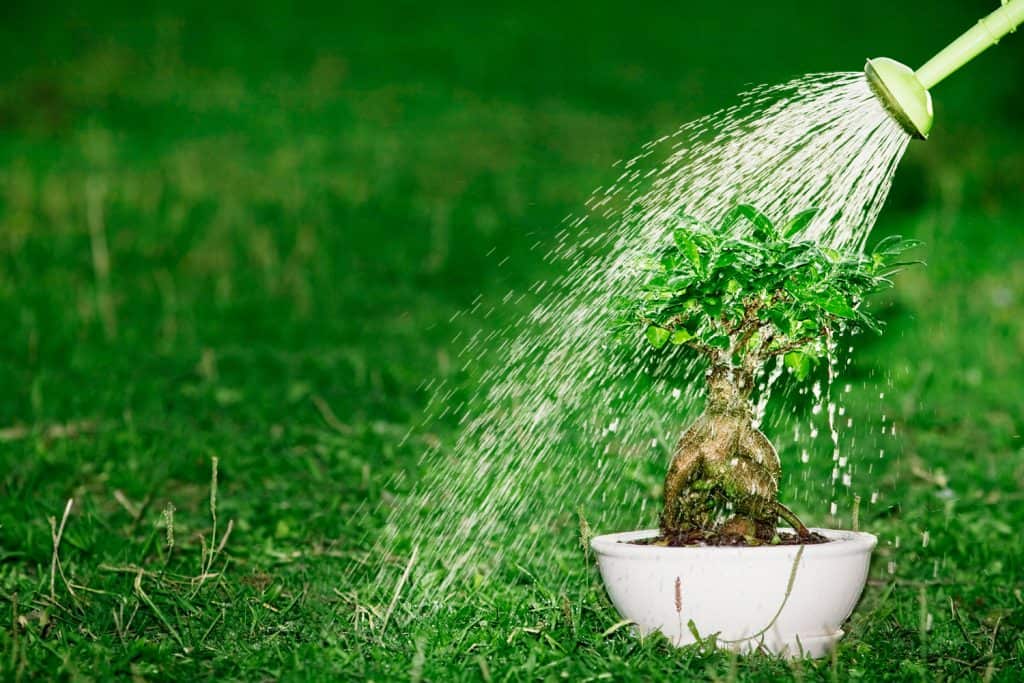
Underwatered Bonsai leaves will wilt, become crisp, and fall off. Daily monitoring of your tree can help catch a lack of moisture before the tree goes through this stage.
You can use a soil moisture measure to check the moisture of your soil using a scale of 1-10, or simply stick your finger in the soil and check for moisture. If your meter reads three or less, or your soil is dry to the touch, it is time to water.
This meter on Amazon measures moisture and soil pH.
Learn more details on this topic here in our blog post, “How Often Should You Water A Bonsai Tree?”
How Do You Know If You're Overwatering Your Bonsai Tree?
Both under and overwatering can be harmful and even fatal for your Bonsai. Constantly wet soil will starve your roots from oxygen and stunt or stop the growth of your tree.
Symptoms of overwatering include an unstable trunk, small or weak branches, change in leaf color, leaf drop, and root rot. Chronic overwatering is responsible for the squishy trunk and can kill your tree.
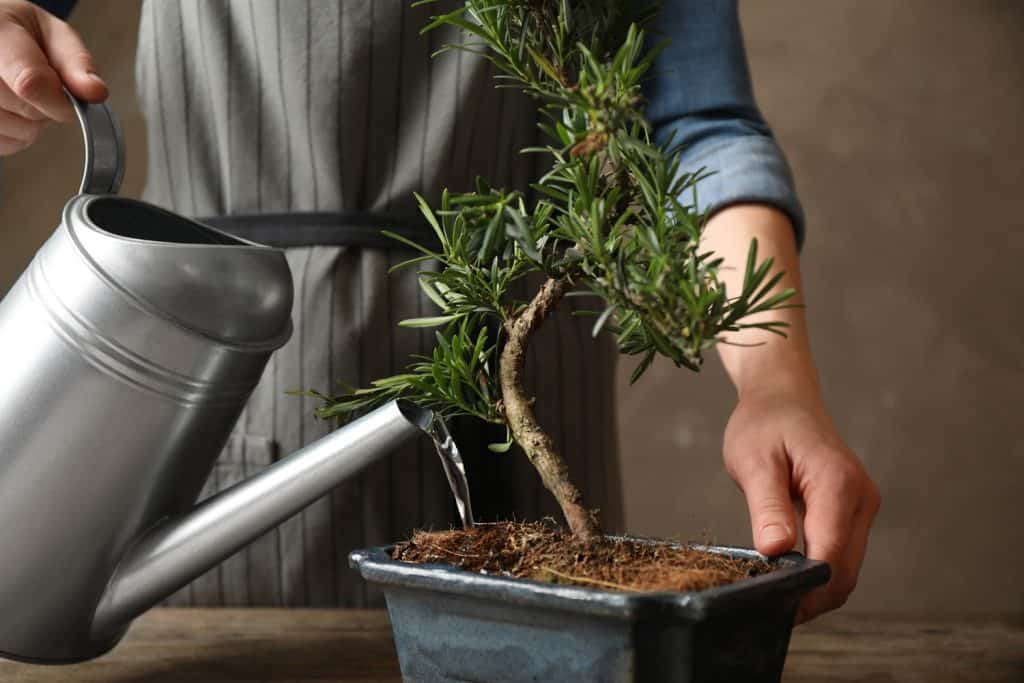
Due to the small pots Bonsai live in and their shallow root systems, these trees are sensitive to changes in care. A daily check on your Bonsai is recommended to allow you to catch any changes in your tree as early as possible.
Since overwatering is first noticeable within the root system, by the time you notice changes in the branches, trunk or leaves, you might be dealing with a chronic issue.
How Do You Revive An Overwatered Bonsai Tree?
If you have noticed your Bonsai overwatered, it is time for some extra care and attention. You will need to move your tree over to a well-draining pot. It is vital for the growth of your Bonsai to have a well-draining environment, both pot and soil.
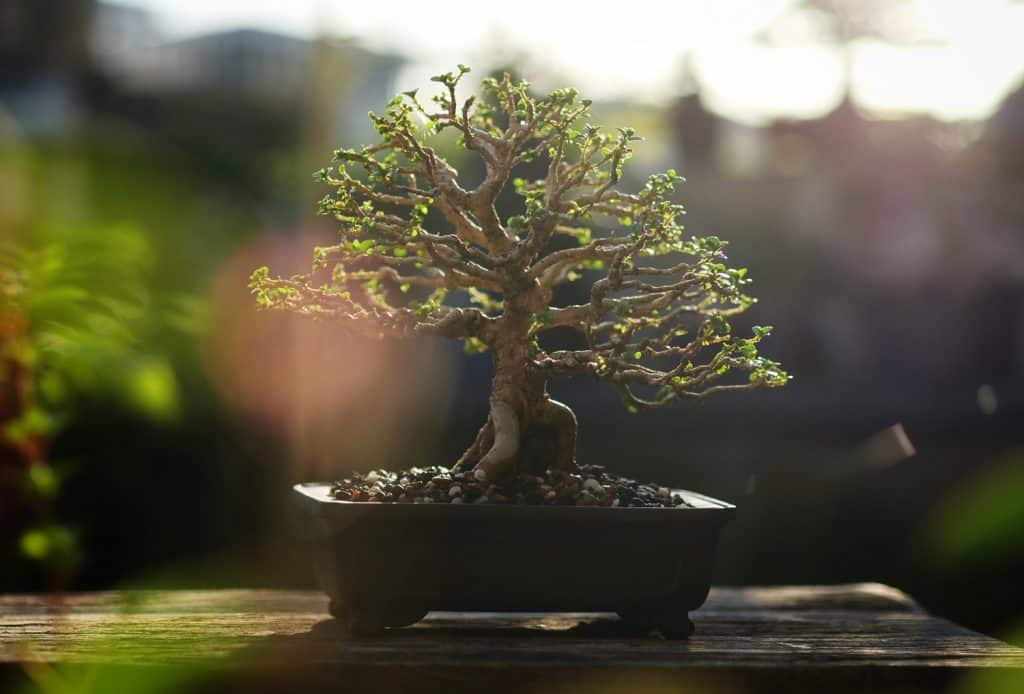
Once you get your Bonsai into a new pot with fresh soil, water lightly and place in an area where your tree will get plenty of natural light. Removing any dead roots, leaves, or branches in the repotting process will help promote growth within your tree.
Read more on our blog post, “How Long Do Bonsai Trees Live?”
Can You Bring A Dead Bonsai Back To Life?
A Bonsai with a completely dead root system cannot be brought back to life. However, if your Bonsai looks completely dead up top, but there are a couple live healthy roots, there is a chance you can restore the health of your tree.
The first step of reviving a Bonsai is determining why it is in this condition. A Bonsai can lose its health due to environmental conditions, bacteria or fungal infections, pest invasions, and more.
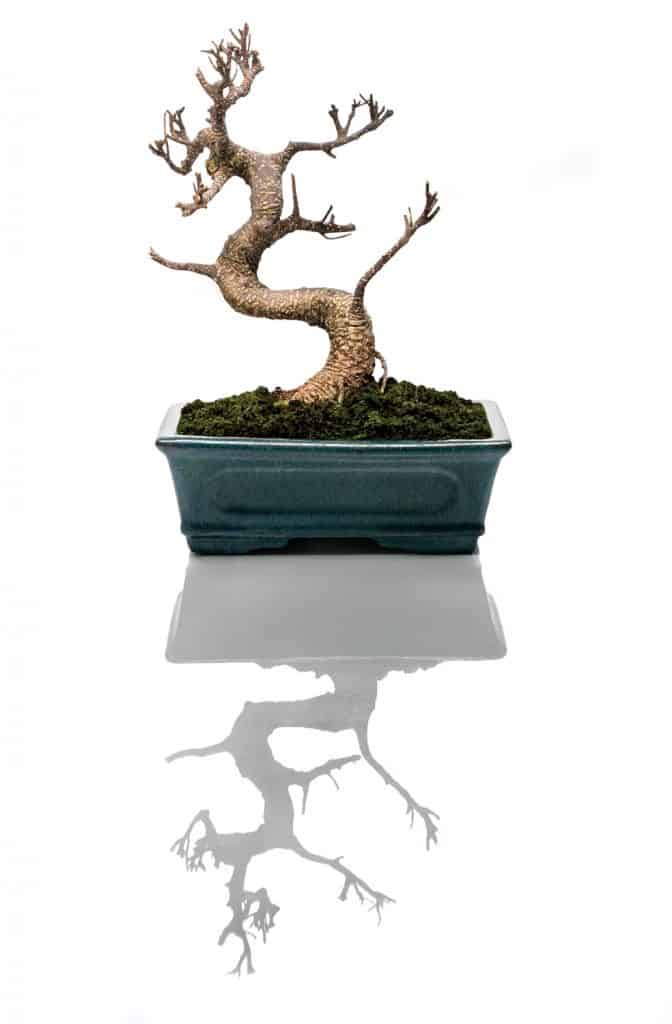
Once you have determined the underlying issue, you can move on to the care or action needed. Just like an overwatered Bonsai or one suffering from root rot, you need to get an almost dead Bonsai into a new pot. A new environment that is full of nutrients, natural sunlight, and adequate drainage will give your tree the best chance.

Depending on what your tree is going through, you may need to treat the roots, leaves, or branches with pesticides or antifungals. After these steps, you will need to practice patience and daily care checks to ensure your Bonsai is on the right track and adjust your care as needed.
Have a look at the video below for an in-depth description of re-potting a Bonsai:
Read more on our blog post, “My Ikea Bonsai Tree Is Dying — What To Do?”
In Summary
A Bonsai with a squishy trunk typically points to overwatering, and in some cases, it can indicate root rot. A soft or unstable trunk means you need to get your Bonsai into new conditions and be closely monitoring moisture levels in the soil.
Over and underwatering can put your tree at risk for health issues, pest infestations, and ultimately death. If you notice symptoms of a declining Bonsai, the best thing to do is to get your tree into a new pot with good drainage. We hope you found this article helpful when identifying signs of under or overwatering, root rot, and what a squishy trunk means for the health of your tree.
Are you looking to step up your skills when it comes to caring for Bonsai? Have a look through our blog post, “How To Grow Moss On A Bonsai.”


